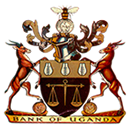Analyzing Consumer Financial Complaints in Uganda

IPA Uganda and the Bank of Uganda analyzed complaints from consumers of financial products and services and have developed a template to standardize the collection of data by financial institutions to create a more efficient complaint-handling process. The analysis revealed complaints came disproportionately from men and consumers in the Central region while the number of complaints remained consistent over the reporting period.
Digital financial services are driving growth in financial inclusion in Sub-Saharan Africa. For instance, 66 percent of adults in Uganda in 2023 had access to finance,1 a jump from 47 percent the previous decade.2 Though financial inclusion has many benefits,3 these services expose consumers to new risks. For example, a previous IPA study found that 53 percent of users reported being victims of fraud, and 57 percent considered financial fraud to be the most disruptive type of crime. As such, understanding the types of issues that consumers face can help regulators and financial institutions more effectively curtail instances of fraud. One source of insights into these risks are data on customer complaints.
IPA Uganda collaborated with the Bank of Uganda to analyze complaints from consumers of financial products and services. To do this, they collected 1,600 complaints submitted over the phone, email, social media, or in person to the Bank of Uganda between 2019 and 2023. In a second phase, IPA Uganda and the Bank of Uganda developed a template to standardize the collection of complaints from financial service providers and set up a dashboard to monitor the analysis of data in real time. The template will then be rolled out to financial institutions reporting to the Bank of Uganda that can be used to create a more efficient complaints handling process and increase the opportunity to collect and compare data.
The analysis of the complaints directly submitted to the Bank of Uganda revealed several trends. About 71 percent of complaints came from the Central region whereas the Western and Eastern regions accounted for just 9 and 7 percent, respectively, despite having a similar population share as the Central region. In addition, 65 percent of all complaints were submitted by men compared to 22 percent by women. Furthermore, the number of complaints remained steady from 2019 to 2022, and were primarily submitted in the second half of the year. The processing times of complaints also remained similar across regions, lasting typically between 6 and 14 days, although some—notably international complaints—took significantly longer.
Sources
1.Bank of Uganda and the Ministry of Finance, National Financial Inclusion Strategy 2023-2028, 2023, 14.
2.Financial Inclusion insights, Digital Pathways to Financial Inclusion: Findings from the Nationally Representative FII Tracker Survey in Uganda (Wave 1), Focus Group Discussions with Lapsed Users and Nonusers of Mobile Money, and Mobile Money Agent Research, 2014, 51
3.Suri, Tavneet, Jenny Aker, Catia Batista, Michael Callen, Tarek Ghani, William Jack, Leora Klapper, Emma Riley, Simone Schaner, and Sandip Sukhtankar. "Mobile money." VoxDevLit 2, no. 2 (2023): 3.
Implementing Partner













